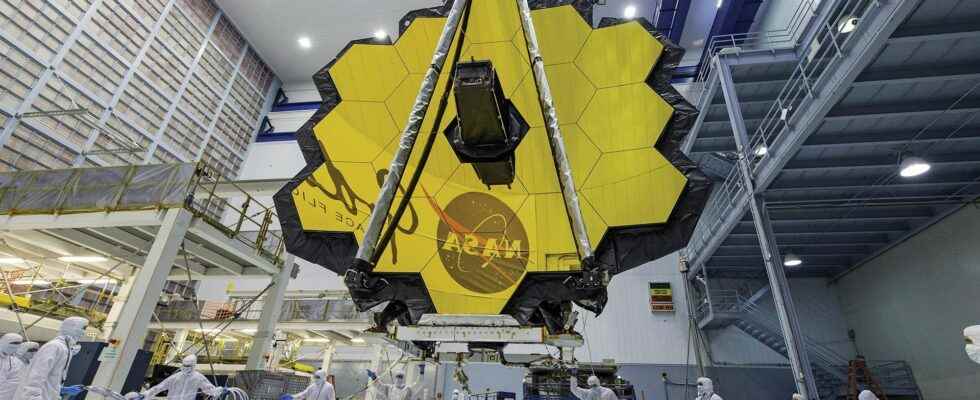The calibration of the James-Webb telescope is progressing gradually. The space observatory made its first observations during the month of February 2022, attracting great interest from amateur and professional astronomers. On this occasion, Futura is organizing a live on March 17 with experts to talk about the most powerful space telescope ever created.
the telescope James-Webb will soon be operational, while the calibration of the new space observatory continues. the James Webb Space Telescope (JWST) arrived at the Lagrange point L2, located 1.5 million kilometers from Earth, on January 24, 2022, after having benefited from a excellent launch thanks to an Ariane 5 rocketon December 25, 2021. During its approximately month-long journey into space, engineers from NASA and theEuropean Space Agency gradually deployed the device, starting with the opening of its solar sail to end with the placement of the primary and secondary mirrors.
A flying start to the mission
Currently, the JWST is still at the configuration stage. Thus, throughout the month of February, the American space agency published photos making it possible to gauge the progress of the space telescope. Three pictures have been revealed since February 11, 2022on which 18 luminous points are observable, revealing one and the same starHD 84406, located in the Ursa Major constellation. HD 84406 served as a reference to certify the proper functioning of the 18 hexagonal mirrors constituting the main mirror of the James-Webb, with a diameter of 6.5 meters. Using the images taken by the telescope, the researchers then carried out a ” stacking », or a stack of shots to achieve a single image, with a clean rendering.
Before being fully operational and providing magnificent images, like the telescope Hubble, the JWST will still need to be calibrated and will be subject to various tests for many weeks. NASA estimated that the James-Webb would be fully functional during the summer of 2022.
The James-Webb attacking the Universe
The new space observatory aims to be revolutionary, erected as the worthy successor to Hubble, in operation since 1990. A few notable differences, however, set the JWST apart from its predecessor. Where Hubble observed thousands of celestial objects emitting in the spectrum visible, the James-Webb will be devoted exclusively to radiation infrared and near infrared. The optics should theoretically prove to be more powerful than those of Hubble, whose primary mirror of 2.4 meters in diameter seems minimal compared to the 6.5 meters of the JWST.
With this instrumentation, the James Webb Space Telescope will be able to image more distant objects in theUniverse, and perhaps observe the oldest galactic systems to understand the formation of the cosmos. Few astronomical phenomena will be hidden from eyes of the JWST. He will thus be able to observe nebulae, supernovae and even exoplanetsproviding an opportunity for scientists to learn more about the composition of some distant planets.
To talk about this promising and revolutionary instrument that is the James-Webb telescope, Futura is organizing a live session with renowned experts on March 17, 2022. The speaker Astropierre will thus welcome Éric Lagadec, astrophysicist at the Observatory of the Côte d’Azur and Lucie Leboulleux, researcher at the Institute of Planetology andAstrophysics of Grenoble (Ipag).
Mark your calendars!
Interested in what you just read?
